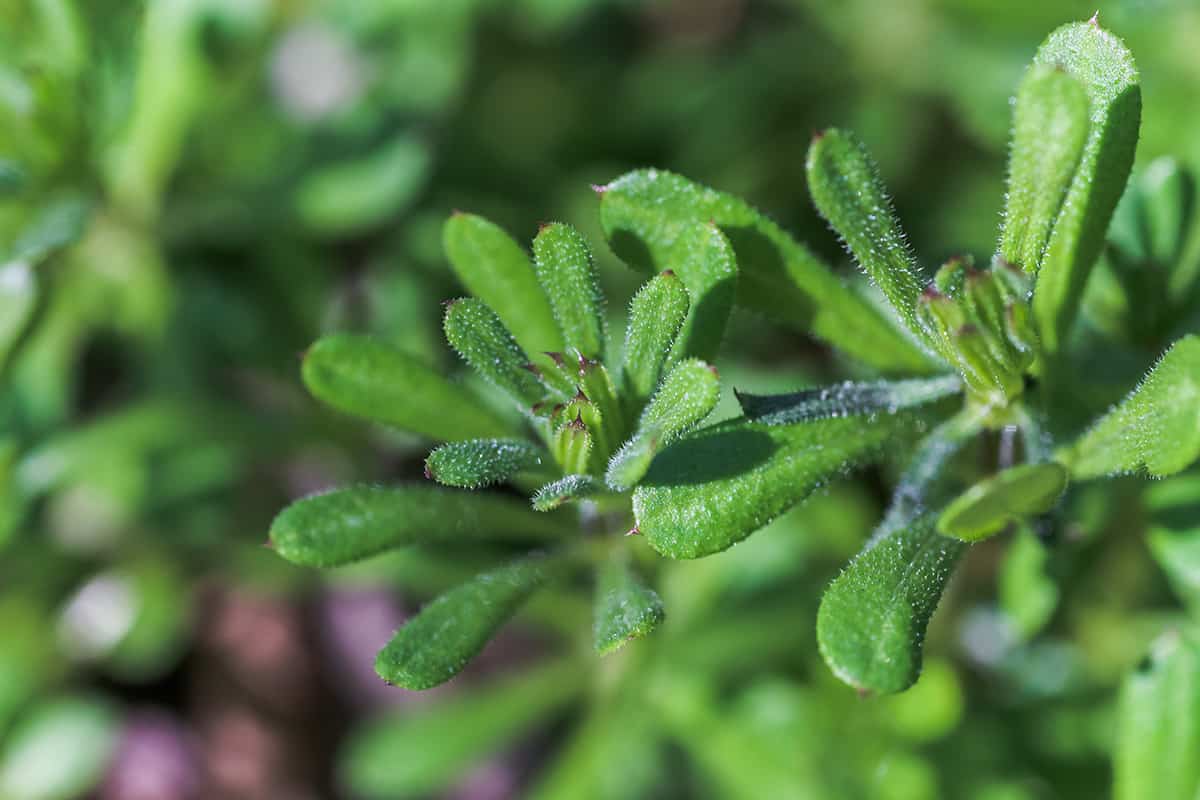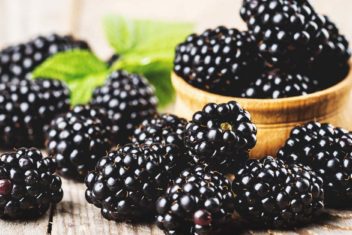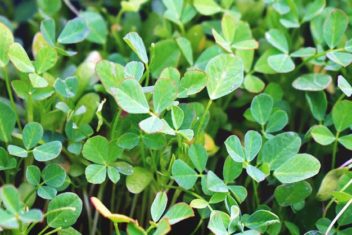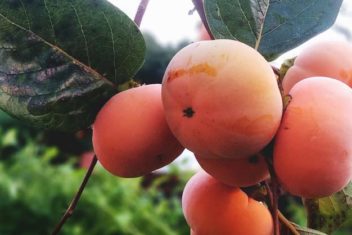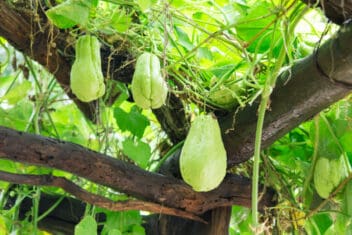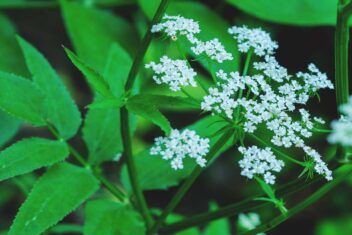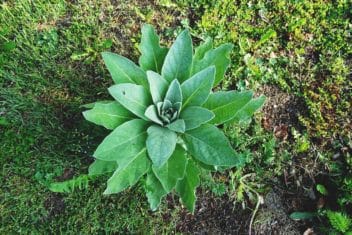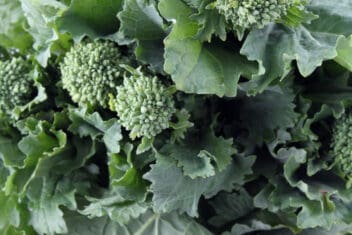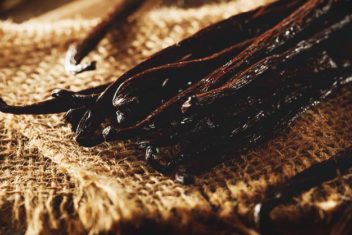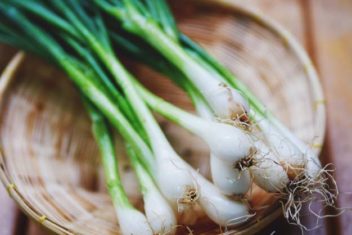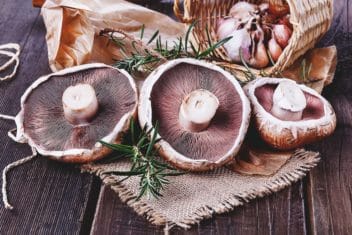I used to think that goosegrass was an annoying weed that stuck to my socks anytime I walked outside. It grows anywhere from paths and gardens to disturbed areas and lawns. It returns every year without fail and is covered in Velcro-like hooks that make it impossible to avoid.
Seriously. The stems and leaves stick to everything – including pets, children, and clothing, earning it quite a bad reputation.
Like most people, I pulled the goosegrass out of the ground because I didn’t realize you could use it for medicinal purposes, cooking, and health. But this “weed” actually has a lot going for it.
What is Goosegrass?
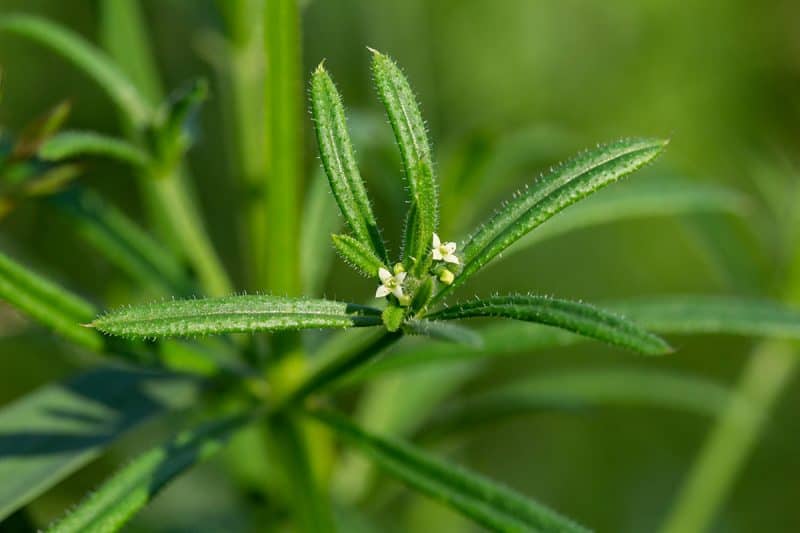
Goosegrass (Galium aparine) is a native weed to Europe, Africa, and Asia. It’s widely known in New Zealand and Australia and has become naturalized in North and South America.
Known by various names, goosegrass is also called cleavers, grip grass, catchweed, stickweed, wait-a-minute, sticky jack, and quite a few more. Almost all of its names are related to the plant being able to hook into fur and clothing easily.
It’s an annual, but it self-seeds freely, so it returns each year unless you make an effort to remove it – and that’s what most people do. Because it’s considered a noxious weed in some areas, and because it can cause a skin rash on some people because of the hooked barbs, most people try to get rid of it.
But this “weed” has a surprisingly good side. Used medicinally, goosegrass is an effective diuretic and effective for urinary issues. In the past, it was a traditional medicine for gallstones and issues with the kidneys and bladder.
It’s high in vitamin C, so it’s one way sailors of old avoided scurvy and is thought to be beneficial for inflammation as well as many other conditions. Plus, it makes an effective trap crop for aphids.
By the way, don’t confuse goosegrass with Indian goosegrass (Eleusine indica). The latter has seeds that are edible and are used as millet is, but it isn’t the same thing as the plant we are talking about here.
How to Plant Goosegrass
Goosegrass is a weed and can grow in a wide range of environments, but grows best in USDA Growing Zones 3 to 9. It likes full sun with a little afternoon shade. Partial shade is okay, but full shade might cause the plant to struggle or die off, depending on how hot it gets in your region.
Most soil is suitable as long as it is moist or slightly dry. Goosegrass doesn’t like soil that is very wet or compact. Loose soil that drains well will see better results. A pH of 5.5 to 8.0 is suitable.
Some people say that the appearance of goosegrass indicates loamy soil. When it grows, goosegrass will climb over existing plants using its hooked bristles. It can grow as high as two feet and can spread almost continuously.
Caterpillars love goosegrass, and geese love it as well. Farmers used to let their geese out to munch on wild goosegrass.
Planting Seed
This is one of those weeds that was used extensively in the past has fallen out of favor, so it’s hard to find starts or seeds.
I have seen seeds for sale online. Organic seeds are especially important if you’re growing this plant for medicinal purposes.
Always double check because there are some places where goosegrass is considered a noxious weed and you’re not allowed to introduce it into the area or even bring the seeds in.
Collect the seeds in late summer from existing plants. Plant straight away so that the seed gets the benefit of the cold in winter and the soil heats up as spring approaches. Chilling helps to break seed dormancy.
Established goosegrass doesn’t mind frost, but young ones can be a little frost tender.
Seeds should be lightly covered in soil because light prevents them from germinating. The ideal germination temperature is at least 60ºF.
There are about 300 seeds on an average-sized goosegrass plant. On large plants, it’s not uncommon to see around 1000 seeds.
Planting Seedlings
Goosegrass is best sown directly, just like it does naturally. I’ve tried removing it and replanting elsewhere but have never been successful. It has shallow roots that are easily damaged. By all means, try to plant in pots and transplant to your preferred area; just don’t be surprised if it doesn’t work.
Planting in Containers
Goosegrass grows well in large containers. Use good quality potting mix and water well, so the medium doesn’t dry out. This gives you the advantage of controlling any spread.
I place the container in a sunny spot by the kitchen door. That way I can clip leaves off quickly and add them to dishes.
Caring for Goosegrass
This is one plant that doesn’t take much care as long as the few things it needs are present. Remember, this plant often pops up and takes care of itself.
Normally extra nutrients aren’t required unless goosegrass is in extremely poor soil. If that’s the case, work in some well-rotted compost or general fertilizer.
Goosegrass loves water in well-draining soil. Keep the soil moist and try not to let it dry out too long. As with all plants, don’t water the plant itself. Water around the base, and avoid waterlogging by giving too much all at once.
You don’t need to pinch or prune the plant unless there is damage or disease. I just let the goosegrass spread. If it gets too big, by all means, harvest some leaves or clip to shape.
You don’t need to prepare goosegrass for winter. Being an annual, it will die off after flowering and hopefully regrow in the same spot next year. Check once the plant has died and cover any seeds sitting on the surface.
You may also find it spreads to other areas thanks to birds, animals and your boots.
Companion Planting for Growing Goosegrass
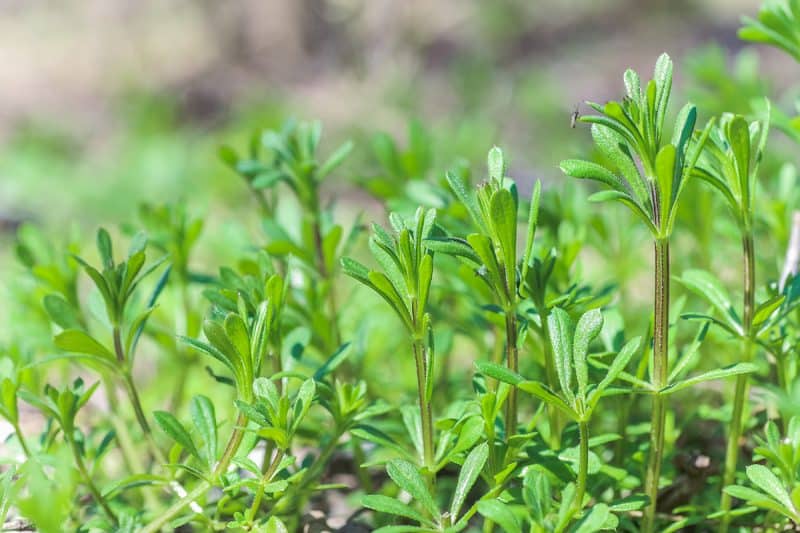
Remember that as goosegrass grows, this plant can smother anything it’s near. It doesn’t strangle other plants, but it does crawl all over them and prevent them from getting light.
Don’t plant with varieties of vegetables you will remove before the goosegrass dies off. You don’t want to disturb the roots. Avoid radish, beets, potatoes, and any other root vegetable. Whatever you plant with, be sure to control the goosegrass and plant with plenty of space.
Try with vegetables like:
- Tomato
- Beans
- Peas
- Chard
- Lettuce
Plant with herbs such as:
- Sage
- Thyme
- Rosemary
- Parsley
- Borage
- Dill
- Nasturtium
Common Problems and Soultions for Growing Goosegrass
Luckily, goosegrass doesn’t suffer too many issues, which makes it a great addition to your garden, especially if you have an apothecary garden.
Aphids
Aphids love goosegrass. In fact, you can plant it as a trap crop to draw aphids away from more important crops. I wouldn’t worry about treat aphids, since they won’t really harm this crop. But if you want to learn more about how to spot and deal with them, check out our guide.
Powdery Mildew
When it comes to goosegrass, powdery mildew is usually because you have planted them too close to each other, or watered too much.
Read our extensive article here on how to identify and treat powdery mildew.
Downy Mildew
Downy mildew tends to hide until it’s well advanced. Our article will give you all the information you need on this disease.
Yellowing Leaves
This usually happens because the soil is deficient in something or the plants aren’t getting enough water. I had this once with my goosegrass, so I fed it with Epsom salt dissolved in water. I put 1 tablespoon in a pint of water and gave this to the plants. They perked up within a couple of days.
Harvesting and Using Goosegrass
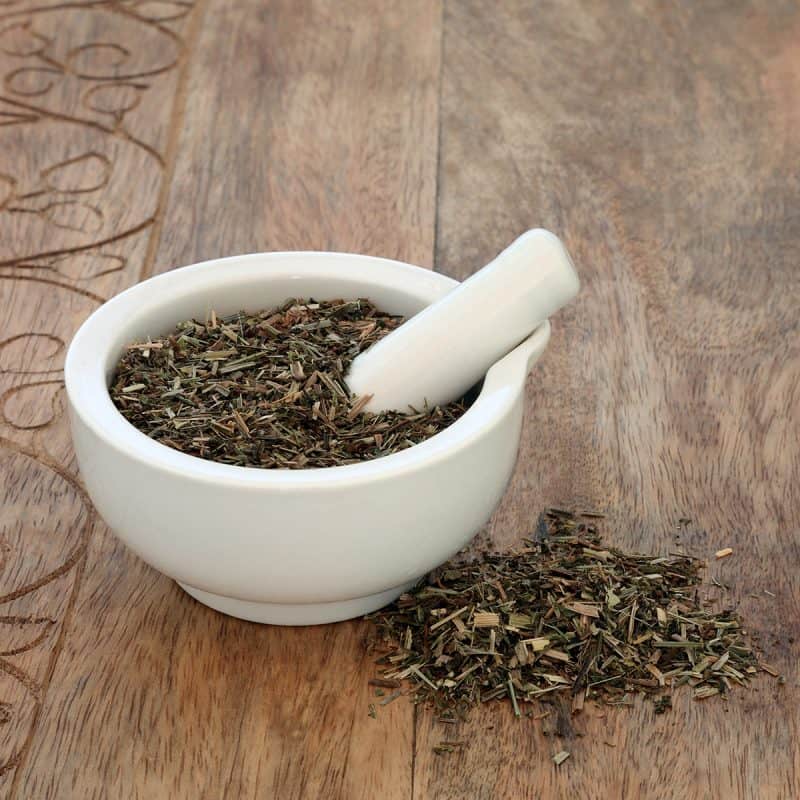
This is where the fun begins. As a gardener, there’s not much more exciting than being able to use a so-called weed as a health and wellbeing ingredient. Be aware if you are foraging goosegrass and live in an area where it may have been sprayed in the past.
Harvest in spring and summer. If the plant gets too old, it can have a buildup of bitterness.
Use the young, soft growth to steam and then add to dishes like soups, stews, casseroles, or any vegetable dish.
The flowers and young leaves can be used raw in green smoothies. You can also use the flowers as edible decorations in baking or salads.
Medicinally, goosegrass has been used for :
- Bladder problems
- Kidney problems
- Diarrhea
- Earache
- Psoriosis
- Pimples
- Acne
Cleavers Tea
Yet another reason people grow and use goosegrass is that it can be consumed as a coffee or tea alternative. This is probably the most common usage for goosegrass or cleavers.
- Pick two tablespoons of fresh leaves and chop roughly
- Place in a cup and pour hot water in to cover
- Steep for five to seven minutes
- Take the tea before meals a couple of times a day
Goosegrass has also been used a lot as a poultice for many conditions. As with all herbs it pays to check with a medical professional before using it. This is especially the case if you are on medication.
